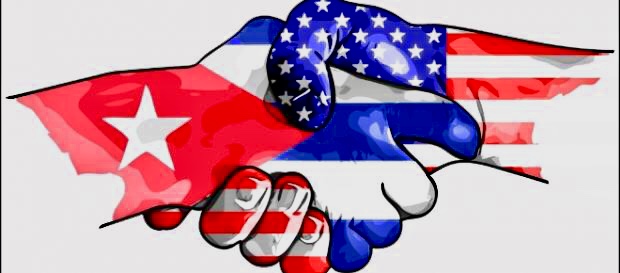Is It Time To Lift The Cuba Trade Embargo?
We have already lifted the travel ban, so let’s go all the way
January 5, 2018
President Kennedy enacted the Cuba Trade Embargo in 1962 with a political goal in mind; 55 years later, that goal has not been achieved. Not only has the Cuba Trade Embargo not reached its intended goal, but it’s continuance does not benefit the United States economy, and is preventing economic progress.
In 1962, the United States was a global superpower caught in the midst of the Cold War and the Cuban Missile Crisis. When Fidel Castro came to power in 1959, after putting an end to the Fulgencio Batista regime, United States corporations were in control of utilities and railroads in Cuba, along with many natural resources such as sugar, cattle, tobacco, oil, timber, mining operations, and a vast amount of farmland.
However the Castro regime nationalized these assets, shifting the power from the U.S. to the Cuban National Government. In response to the dramatic loss of power, the United States implemented the Cuba Trade Embargo, which prevents the importation and exportation of goods between Cuba and the United States, and previously banned travel between the two countries. President Kennedy implemented the Cuba Trade Embargo in hopes of collapsing the Cuban Government, and regaining the power that the United States had originally held. But the embargo did not achieve this goal, instead taking away almost all economic and social interactions between Cuba and the U.S., which led to an economic absence in the United States, which continues to this day.
One of the most significant downfalls of the Cuba Trade Embargo falls upon the shoulders of the agricultural industry, which is one of the main industries that supports the United States, grossing a total of 992 billion dollars. The Cuba Trade Embargo allows agricultural exports to Cuba on an exclusively cash only basis. As the United States does not allow credit, Cuba has gone to countries who do, including Vietnam, Brazil, China, and Canada.
Cuba has a population of 11 million, and 80% of the food to feed this exploding population is imported from foreign countries. Lifting the Cuba Trade Embargo could open up a two billion dollar agricultural import market to the United States, which would in turn create 17.3 million jobs for U.S. citizens. The Texas A&M University calculated that eliminating the elements of the Cuba Trade Embargo that hinder agricultural exports and restrict travel bans to Cuba could create a total of 6,000 jobs in the United States, which would create a profit that would benefit our economy.
Economists estimate that without the Cuba Trade Embargo, U.S. exports to Cuba would be 4.3 billion dollars and Cuban exports to the U.S. would be 5.8 billion dollars per year. In addition, the U.S. Chamber of Commerce states that the Cuba Trade Embargo costs the United States 1.2 billion dollars annually in lost sales exports. To add to that, the Cuba Policy Foundation gauged that the annual cost of lost sales to the United States economy could potentially reach 4.84 billion dollars in agricultural exports alone.
The Cuba Trade Embargo had a legitimate goal during its implementation nearly half a century ago, but today it is severely outdated, and it’s irrelevance is affecting the U.S. economy in a negative way by not expanding for economic progression and growth.






































